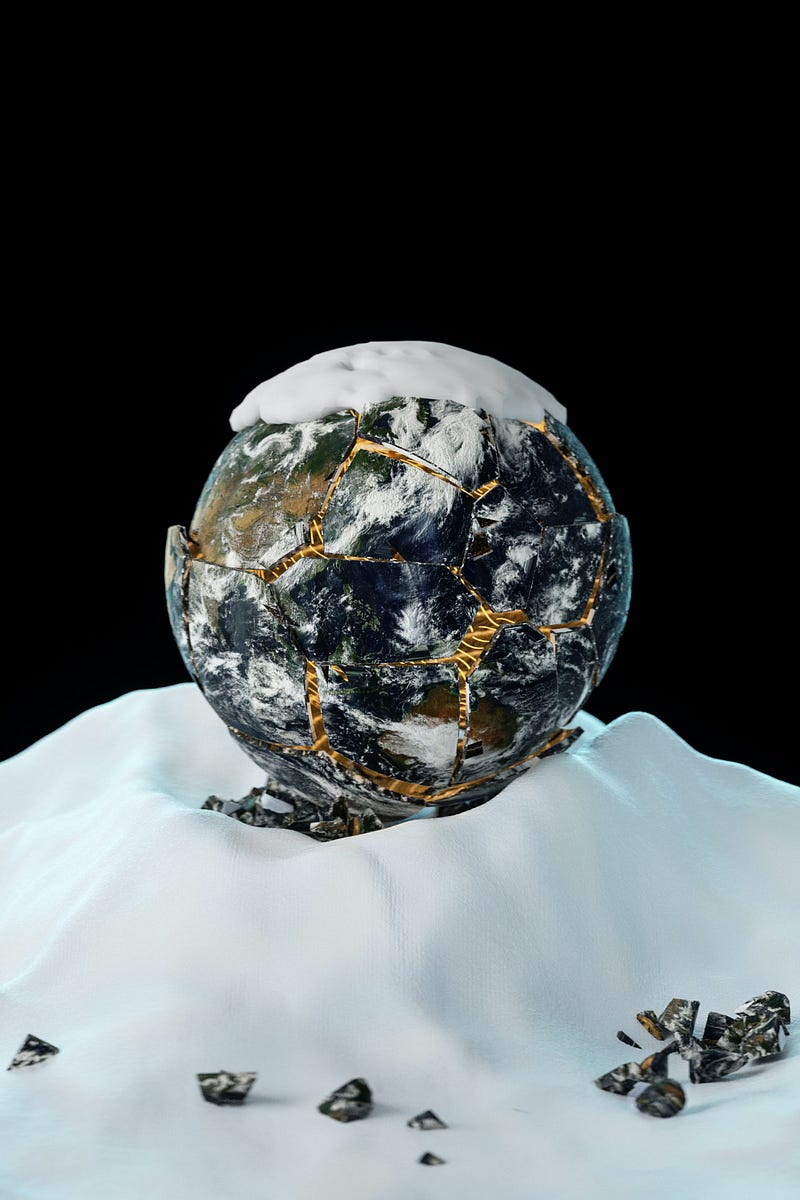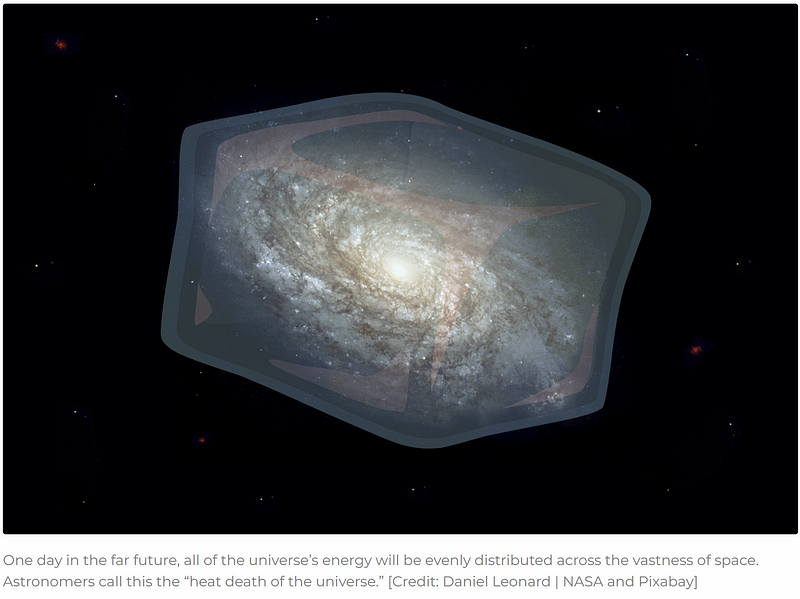The Icy Future of the Universe: Exploring the Big Freeze Theory
Written on
Chapter 1: The Big Freeze Explained
The concepts of the 'Big Freeze' and 'Heat Death' provide intriguing insights into the possible long-term future of the universe as understood by modern cosmology. These theories speculate about events that could unfold billions or even trillions of years from now.

The Big Freeze theory posits that the universe will perpetually expand at an accelerating pace. As this expansion continues, galaxies will drift farther apart, and stars will eventually deplete their fuel reserves, leading to their demise. This process will render the universe increasingly dark and barren.
As time progresses, all matter will further disperse, causing the universe to cool gradually. Ultimately, the remnants of stars and galaxies will vanish, resulting in an expansive void. The temperature will approach absolute zero, diminishing the energy available to sustain any form of life or activity.
Section 1.1: The Underlying Physics
The foundation of the Big Freeze theory aligns with the second law of thermodynamics, which asserts that entropy, or disorder, will rise within a closed system over time. With the universe's expansion, energy becomes more diluted, driving the universe toward a state of maximum entropy and minimal energy, where little to no activity can occur.
Subsection 1.1.1: The Heat Death Concept
The Heat Death theory is a closely related concept to the Big Freeze, concentrating on the diminishing usable energy within the universe. As the universe expands, it may eventually reach a state of thermodynamic equilibrium, where energy is uniformly distributed. In this scenario, temperature gradients equalize, preventing any form of energy transfer or work, leading to a stagnant and lifeless environment.

While these theories offer a glimpse into possible outcomes based on our current understanding, other hypotheses exist. Some theories propose a cyclic universe where expansion and contraction occur in alternating phases, suggesting that the universe may not ultimately freeze or perish but continue to oscillate indefinitely.
Section 1.2: Factors Influencing Cosmic Fate
The ultimate destiny of the universe hinges on factors such as the total amount of dark energy, its equation of state, and the behavior of other fundamental forces. These elements can significantly impact the universe's trajectory, introducing various possibilities for its future.
Moreover, the timeframes associated with these scenarios are immense, extending billions or trillions of years into the future—far beyond human comprehension and current scientific capabilities. While pondering the universe's fate is an exciting area of scientific inquiry, it is essential to recognize that these predictions are highly speculative and subject to change as our understanding evolves.
Chapter 2: Speculative Futures of the Universe
To summarize, the Big Freeze and Heat Death theories present potential long-term outcomes for the universe based on our current insights. However, these concepts rely on existing assumptions about dark energy behavior, the universe's expansion, and the absence of transformative events in the future. Continuous scientific exploration and breakthroughs are vital for enhancing our understanding of the ultimate fate of our vast and enigmatic cosmos.
The first video delves into the intricate details surrounding the Big Freeze theory, exploring concepts such as empty space and supernovae with insights from Lawrence Krauss.
The second video discusses various scenarios for the universe's end, offering a broader perspective on potential futures.
What are your thoughts? Feel free to share your views or give a clap to support!
If you enjoyed this article, consider following for more content.
You may also find these topics interesting:
Could the Universe End in the Same Way that it Started?
Why the ‘Big Rip’ May Tear Us Apart!
Dark Energy: A Mysterious Force in the Cosmos!
The ‘Theorized’ Birth of Mother Earth
Black Holes: What, Where, When, Why, and How?
For further reading, please click the links above.